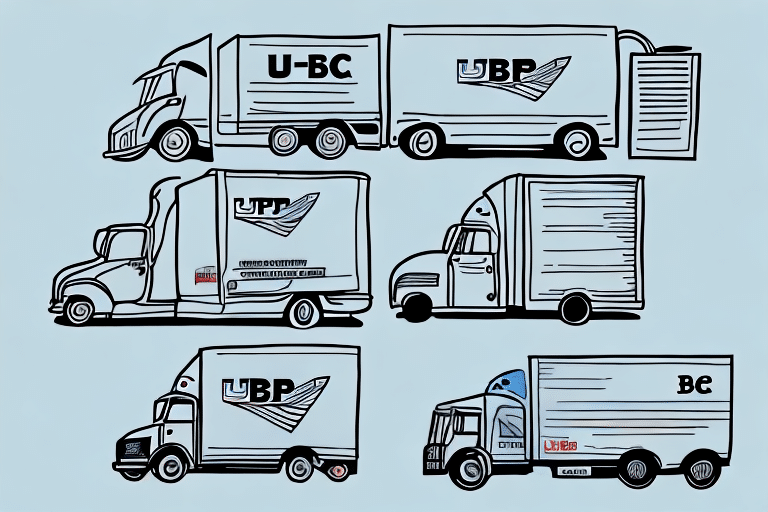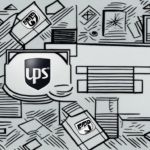Introduction to USPS and UPS
If you frequently send or receive packages, understanding the differences between the United States Postal Service (USPS) and United Parcel Service (UPS) is essential. This comprehensive comparison will help you determine which shipping option best suits your needs.
Service Coverage and Areas
Domestic Services
USPS operates extensively across the United States, including all its territories, with over 30,000 post offices ensuring delivery to every address, no matter how remote. This widespread coverage makes USPS a reliable choice for domestic shipping.
International Services
UPS offers a more expansive international reach compared to USPS, operating in over 220 countries and territories. This global presence makes UPS an ideal choice for businesses and individuals needing reliable international shipping solutions.
Shipping Rates and Pricing
USPS Pricing Structure
USPS is renowned for its affordable rates, especially for small and lightweight packages. Services like Priority Mail and First-Class Mail offer cost-effective solutions for domestic shipments. According to the USPS website, Priority Mail starts at $7.70 for packages under one pound.
UPS Pricing Structure
UPS tends to be more expensive, particularly for heavier packages and international shipments. However, UPS compensates with advanced tracking and expedited services. For example, UPS Next Day Air provides overnight delivery across the U.S. more reliably, as detailed on the UPS website.
Delivery Times and Reliability
USPS Delivery Options
USPS offers various delivery speed options, including Priority Mail Express, which promises overnight delivery to most U.S. locations. Additionally, standard services like Priority Mail typically deliver within 1-3 business days.
UPS Delivery Options
UPS provides a range of delivery speeds, from same-day delivery in select areas with UPS Express Critical to standard ground shipping, which usually takes 1-5 business days. UPS’s reliable service ensures timely deliveries, especially for time-sensitive packages.
Reliability Metrics
According to the latest industry reports, UPS consistently maintains higher on-time delivery rates compared to USPS. For instance, UPS boasts a 97% on-time delivery rate, whereas USPS averages around 92% (Statista).
Package Specifications and Restrictions
USPS Restrictions
USPS accepts packages up to 70 pounds and up to 130 inches in combined length and girth. Additionally, USPS imposes restrictions on certain items, such as hazardous materials and perishables.
UPS Restrictions
UPS allows larger packages, accepting up to 150 pounds and 165 inches in combined length and girth. UPS also restricts shipping of specific items like live animals, certain batteries, and hazardous materials.
Additional Fees
Both USPS and UPS charge additional fees for packages exceeding their size and weight limits. USPS charges extra for packages over 108 inches in combined length and girth, while UPS imposes fees for exceeding 165 inches. It's advisable to consult each carrier's official guidelines before shipping oversized items.
Tracking, Security, and Insurance
Tracking Features
UPS offers more advanced tracking capabilities, providing real-time updates and detailed progress maps. USPS provides reliable tracking for services like Priority Mail, though updates are less frequent compared to UPS.
Security Measures
Both carriers prioritize package security. UPS employs sophisticated security protocols and monitoring systems to prevent theft and damage, while USPS utilizes secure handling processes across its extensive network.
Insurance Options
USPS includes up to $100 insurance for Priority Mail at no additional cost, whereas UPS offers up to $100 for free and provides options for higher coverage at an extra fee. It’s important to review each carrier’s insurance policies to ensure adequate protection for your shipments.
Customer Service and Support
USPS Customer Service
USPS offers customer support through multiple channels, including phone, in-person at post offices, and email. Programs like Informed Delivery enhance customer experience by allowing users to preview incoming mail and packages.
UPS Customer Service
UPS provides comprehensive customer support via phone, email, online chat, and social media. Services like UPS My Choice give customers greater control over their deliveries, including customization and notifications.
Service Reliability
UPS is often praised for its exceptional customer service and responsive support teams, whereas USPS receives mixed reviews, particularly during high-demand periods.
Choosing the Right Shipping Service
For Businesses
Businesses with a high volume of shipments, especially those requiring international shipping and advanced tracking, may find UPS more suitable despite the higher costs. UPS’s robust infrastructure supports large-scale operations effectively.
For Personal Use
Individuals shipping smaller, domestic packages may prefer USPS due to its affordability and extensive local coverage. Services like USPS Priority Mail offer a balance of cost and reliability for personal shipments.
International Shipping Services
When shipping internationally, UPS generally offers faster and more reliable services compared to USPS. UPS’s global network and partnerships ensure efficient delivery across borders, while USPS provides more economical options suitable for less urgent shipments. For detailed international rates and services, refer to the UPS International Shipping and USPS International Services pages.
Packaging Materials and Options
USPS provides free packaging for certain services like Priority Mail and Priority Mail Express, making it convenient for senders. Conversely, UPS does not offer free packaging but provides a variety of packaging options for purchase, including specialized boxes and protective materials. Proper packaging is crucial to ensure the safety and integrity of your shipments.
The Future of Postal Services in America
The landscape of postal services in America is evolving amidst increasing competition from private courier companies and the rise of e-commerce. USPS is focusing on modernization efforts and expanding its services to remain competitive, while UPS continues to enhance its global operations and technological advancements. The future will likely see continued innovation and adaptation from both carriers to meet changing consumer demands.
In conclusion, both USPS and UPS offer distinct advantages and cater to different shipping needs. By evaluating factors such as service coverage, pricing, delivery speed, and specific requirements, you can make an informed decision on which carrier best aligns with your shipping preferences.




















